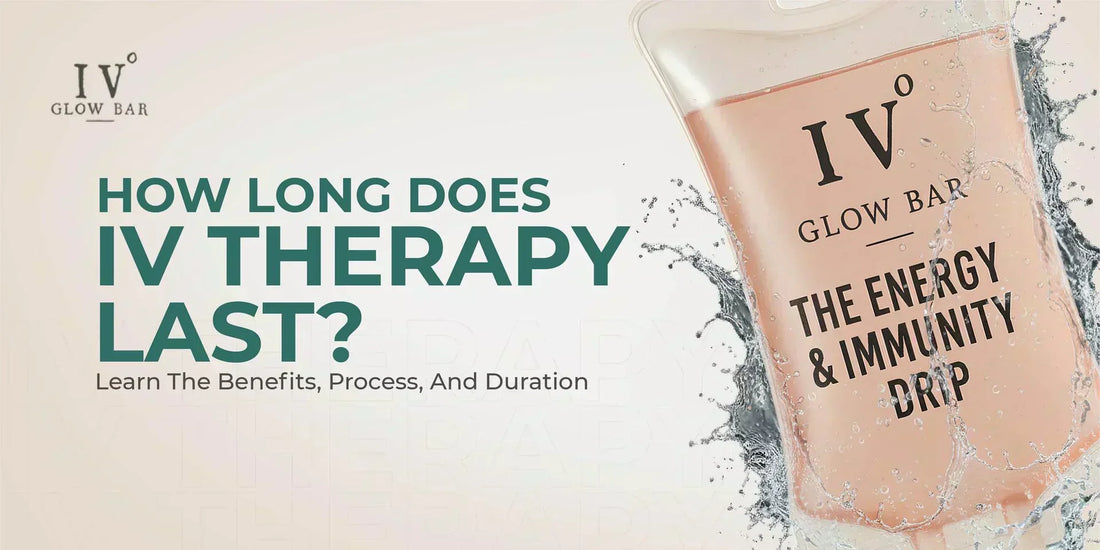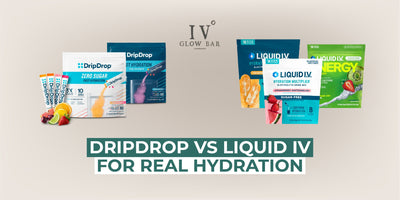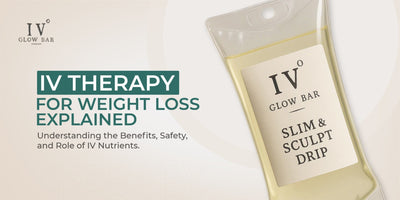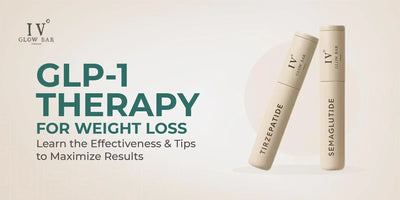How Long does IV Therapy Last in your System?
Written & Medically Reviewed by Nurse Hannah
Share

IV therapy has quickly become one of the most popular options for hydration, wellness, and recovery. From busy professionals to athletes, more people are turning to IV drips as a fast, effective way to rehydrate, restore energy, and boost overall health.
I often get the same question from patients: “How long does IV therapy last?” What they really want to know is twofold: how long they’ll be sitting in the chair during treatment, and how long the benefits will stay with them afterward.
In this post, I’ll walk you through both the typical session time and how long the effects usually last, as well as the main factors that can influence your results.
How Long Does an IV Therapy Session Take?

IV therapy sessions generally last between 30 and 60 minutes. Simple drips may wrap up in half an hour, while more intensive ones, like NAD+, can stretch out longer.
Here’s what really shapes that timing:
- Type of drip: A simple hydration IV with fluids and electrolytes usually goes more quickly. But vitamin-rich cocktails or more complex therapies could stretch the session a bit.
- Your body’s requirements: If you are dehydrated, run down, or recovering from illness, the infusion is sometimes modified to match your system, and this might add some time.
- Clinic or a mobile setting: Sessions in a wellness lounge, at spas, for example, often seem relaxed and leisurely. With mobile IV, setup and comfort count for a lot, but once the drip is flowing, the treatment time frame is roughly comparable.
So, if you’re planning an appointment, I recommend thinking of it like giving yourself an hour break, enough time for your body to take in what it needs without throwing off your whole day.
How Long Do the Effects of IV Therapy Last?
Most of the clients notice the benefits hanging around anywhere from 2 to 4 days if it’s just hydration, and up to 1–2 weeks when it’s vitamin or immune-focused drips. The truth is, it depends a lot on what type of IV you’re getting and also on your own body. But in general,
Here’s how it usually breaks down:
- Hydration IVs: These are the quickest acting. You feel the relief almost right away, no more heavy head, dry mouth, or drained feeling. But the effects usually last 24 to 72 hours because fluids move through your system fairly quickly.
- Vitamin C & Immunity Drips: These are stronger on the wellness side. They don’t just top up fluids, they boost your immune system and fight off that run-down feeling. People often notice the lift for about 1 to 2 weeks.
- Energy & Performance Drips: Think of these as your fast spark plugs. You’ll usually feel a burst of clarity and energy within hours, and that sharper focus or recovery boost can stay for a few days before it fades back.
Here’s an easy way to look at it. Hydration works fast but fades quicker. Vitamins and immune support keep your body going longer. Energy blends land in the middle ground. The food you eat, the rest you get, even the stress on your mind, all of it shapes how long those results last in your body.
Key Factors That Influence Duration
Two people can sit next to each other, get the same drip, and still walk out with totally different results. Why? Because your body has its own way of using and holding onto those fluids and vitamins.
The following factors decide how long the effects of IV therapy last in your system.
1. Hydration Levels
A dry, dehydrated body grabs every drop of IV fluid like it’s been waiting all day. The change feels almost instant, and the benefit lingers. A body that’s already hydrated acts differently. It moves those fluids out faster, leaving the effects for a shorter stretch of time.
2. Metabolism & Body Weight
Everybody burns through nutrients at a different speed. If your metabolism runs fast, you’ll probably notice the benefits wear off sooner. Same with body size, a larger body might spread out the vitamins and electrolytes more, so sometimes the session needs adjusting to keep the effects steady.
3. Lifestyle Habits
Your post and pre-drip habits have a great impact on the effectiveness. If you go back to late nights, stress, fast food, or heavy drinking, those benefits can fade quickly. But if you’re resting, eating clean, and staying hydrated, then that boost from your IV therapy will stretch out a lot longer.
4. Underlying Health Conditions
If you have any underlying health issues, this directly alters the effect of the IV therapy. If you’ve got digestive problems, kidney or liver issues, or your immune system is weaker, your body might use up those nutrients faster or process them differently. Medicines can also change the effect. Talking honestly with your provider before getting a drip makes a big difference because they can shape the treatment for your situation.
How Often Should You Get IV Therapy?
A lot of people ask me how often they should come in for IV therapy. It depends on your body and your preferences.
- A weekly or biweekly IV session often feels right for basic wellness. It supports hydration, helps your immune system, and gives a steady lift in energy. It works as simple upkeep for the body, like sticking to exercise or choosing good food.
- If you’re an athlete, recovering from illness, traveling a lot, or dealing with dehydration, you may need IV therapy more often. In those cases, sessions can be closer together, but they should always be guided by a medical professional.
Always, the key is to listen to your body. Some people feel the benefits carry them for a full week, while others notice their energy dipping sooner. You should pay attention to your recovery, mood, and hydration, which will best guide you for timing your next drip.
Safety and Expert Tips
As an IV therapy expert, I always suggest people take certain safety measures.
- Is IV Therapy a Secret to My Health and Wellness? IV therapy is beneficial for hydration, vitamins, and recovery, but it is not a substitute for proper sleep, diet, or consuming enough water.
- Do I Need to Disclose My Health History Prior to IV Therapy? If you have kidney disease, heart problems, or are taking certain medicines, let your treatment providers know.
- What Do I Need to Watch for During and After the Drip? If you experience pain, dizziness, or something that feels off, speak up immediately. Never push through discomfort.
- How Can I Stick to What My Body Truly Needs? Balance is key. Stick to a schedule that serves your personal goals and keeps your health on track.
- Is IV Therapy Something I Can Make Part of My Daily Wellness? Use IV therapy as a supplement, not a substitute for your daily wellness practices.
FAQs
How long does vitamin IV therapy last?
Vitamin IV therapy effects usually last 1–2 weeks. It depends on your body’s needs, lifestyle, and metabolism. Many people feel boosted energy and improved wellness during that period.
How long does NAD IV therapy last?
NAD IV therapy can last 4–14 days. Sometimes longer, depending on dosage and health goals. People usually report mental clarity, better energy, and focus after the infusion.
How long does IV drip therapy last?
Most IV drips last in your system for 2-4 days. But certain vitamins or immunity drips can extend benefits up to 1–2 weeks, depending on your body’s absorption.
How long does IV therapy last for MRSA infection?
IV therapy for MRSA is different; it lasts as long as your antibiotic treatment plan. Duration depends on severity, usually several days to weeks under medical supervision.
Conclusion
When you think about it, your body already tells you when it’s running low, that dragging tired feeling, the dry mouth, the fog that just won’t lift. That’s where IV therapy can step in, not as some miracle cure, but as a real support to get your system back on track.
So instead of putting it off, maybe it’s time you let your body feel that reset. Call us at 323-875-8203 now and ask your questions. Sometimes the smallest step can make the biggest difference.






